Always Listen Before Buying
You are looking for new speakers. Maybe you are putting together your first HiFi set-up. Or perhaps you have moved house and your new music room is larger, or smaller, meaning your current speakers are no longer suitable. Or maybe you have just decided to upgrade your current system. The first trap to avoid is making a choice based on aesthetics. It is tempting to buy speakers simply because they look great and you can picture them in the living room. There is a serious risk of disappointment here. The first, and by no means the least important tip is this: you should never buy a pair of speakers without listening to them first. At the very least, listen in the shop; but it is best to borrow them for a trial at home.
Although every HiFi system aims to reproduce the real sound as closely as possible, every speaker takes a different route. While it isn't really the case that some speakers are made for classical music and others are made for rock, there are some speakers which are better at handling one genre than another. Once again, when it comes to forming your own opinion, there is no substitute for listening. In addition, there are pitfalls. Some small bookshelf speakers deliver more power than column speakers that are three times larger. This fact should demonstrate that the size of a speaker and the number of loudspeakers on the front cannot give you an idea of its sound signature in advance.
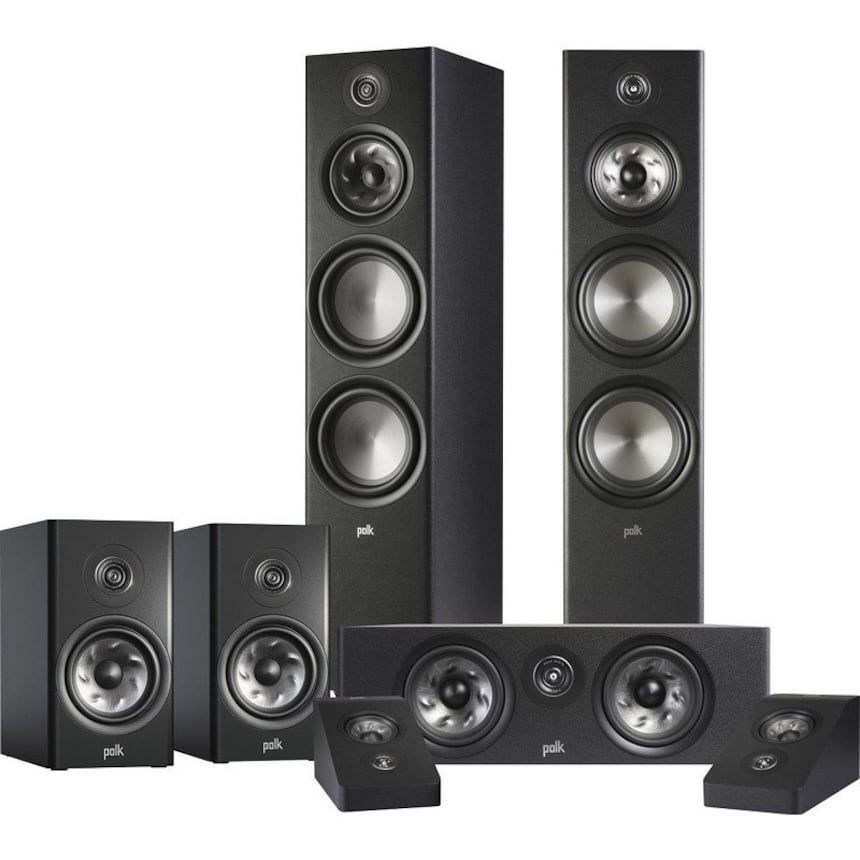
That being said, questions of design, colour and finish are not unimportant. Big or small, speakers have an impact on your home. It is hard to buy speakers simply because we like the way they sound, if we don’t like the way they look. That means that you have to study the product on offer and assess it aesthetically. Is its format high or wide? Are its edges rounded or sharp? If it has a wood veneer, what kind of wood is it? Is the paintwork matte or gloss? Some brands offer their speakers in your choice of colour, for a fee, and generally only for high-end models.
Next comes the question of budget. There will always be an upper price limit which will prevent you from buying certain dream models. The speakers are the mainstay of a HiFi system but you need to avoid any imbalance. For example, it would be difficult to get the best performance out of large column speakers costing tens of thousands if they are connected to a small amplifier costing 500 Euros. There will always be some pairings that work well unexpectedly. But overall, the 50/50 rule applies: 50% of the budget should go on speakers, and 50% on electronics. This rule is not set in stone, but it is a simple way of avoiding being disappointed by an unsuitable pairing.
Next, the speakers have to be suitable for your listening room. Even if you love the large 1.6m columns, they won't work brilliantly in a 15m2 room. The same goes for small, discrete bookcase speakers that will struggle to fill a large living room with sound. You have to take a common-sense approach to finding the format that suits your room. We refer you to our previous article: Placing your speakers (correctly).
• Always listen to speakers before buying them
• Choose speakers that fit your budget and room size
Passive Speakers
So-called 'passive' speakers require a built-in amplifier or power pack. The only connection is the speaker cable terminal. This is the most classic type of speaker, although the range has diversified enormously over the last ten or twenty years to include other offers, which are detailed below.
Bookshelf speakers
The bookshelf speaker is the smallest model. There are really tiny ones, which measure less than 15 cm across. Obviously, these will be limited in the lower frequencies and will need to be accompanied by a subwoofer. More conventionally, a bookshelf speaker operates in two ways, with a tweeter for the high frequencies and a woofer for the midrange and bass. The latter measures between 10 and 20 cm in diameter. The bookshelf speaker is a good compromise between performance and size. It can be placed on furniture or shelves. It does not necessarily need a lot of power, although there are always exceptions.
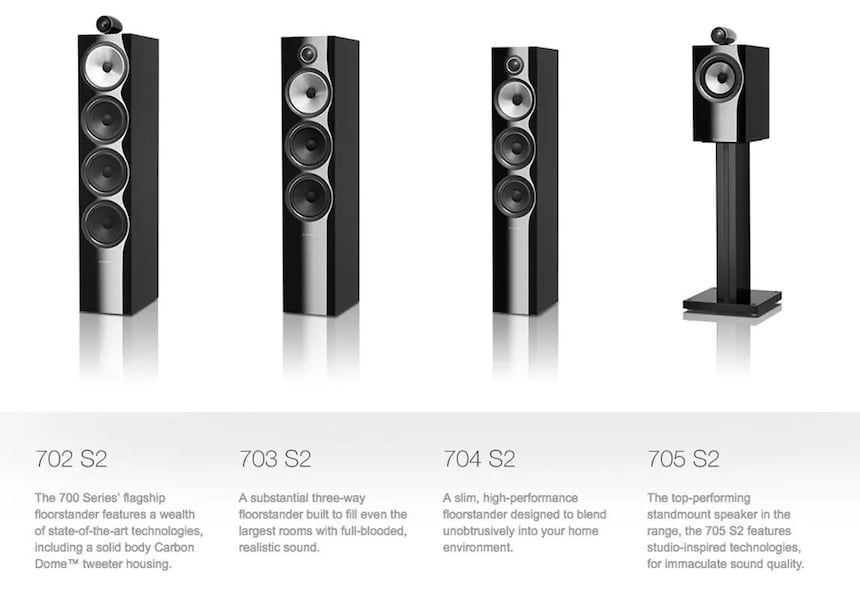
Column Speakers
Column speakers are often slender. They start at 80 cm and the larger models can be taller than 2 metres. Small column speakers take up little more room than a pair of high-performance bookshelf speakers. Like the latter, columns are set up in a simple two-way tweeter/woofer format. The larger they are, the more room they have for loudspeakers, especially in the bass range, which makes all the difference. Larger models can perform better right down into the bass range, which means that there is no need for a subwoofer.
Monitors
Monitors, which have been out of fashion since the 1980s, are parallelepipedal speakers. Rather lacking in aesthetic appeal, they are derived from the so-called studio monitor speakers which were produced for professional studios. This is a field that American brands specialise in. After almost disappearing entirely, they are now making a strong comeback, thanks to the manufacturers who have always championed them. Their rather blocky look fits with a vintage style. They immediately bring to mind speakers from the 1970s. Naturally, it is a choice. Monitors are a good way to combine newer speakers with vintage electronics for aesthetic consistency.
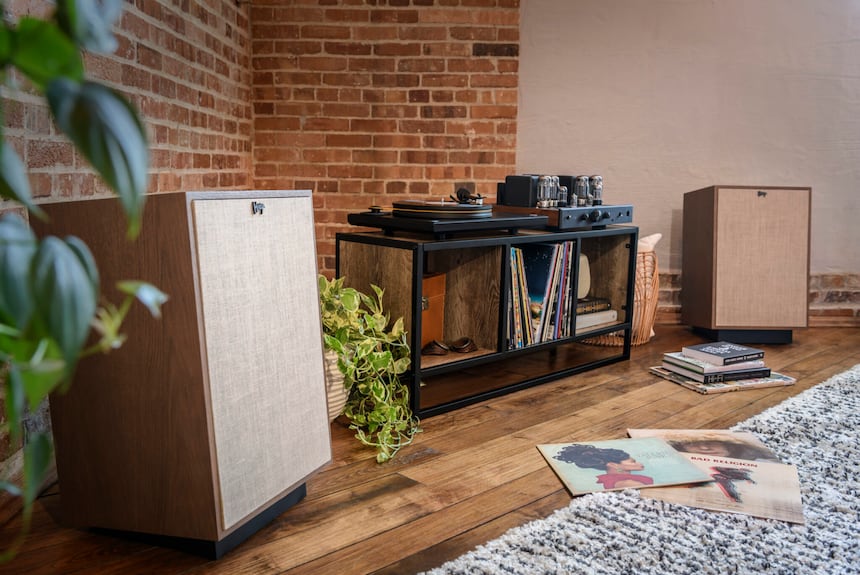
Active Speakers
Active speakers incorporate amplifiers, cutting out the need for an additional amplifier in your system. Sold as a single unit, their built-in amplification is a perfect fit for the speaker as a whole. This avoids the headache of pairing the right amp with the right speakers. Some of these speakers are merely amplified, while others have full connectivity to external sources via WiFi or Bluetooth.
Powered Speakers
Powered speakers connect to mains power. Generally, the master speaker carries the stereo amplification for both speakers and has to be plugged into a power outlet. The slave speaker connects to the master speaker via a speaker cable or proprietary cord. The three main formats of passive speakers exist in powered versions, but not with all manufacturers, because this category is still rather under-developed.
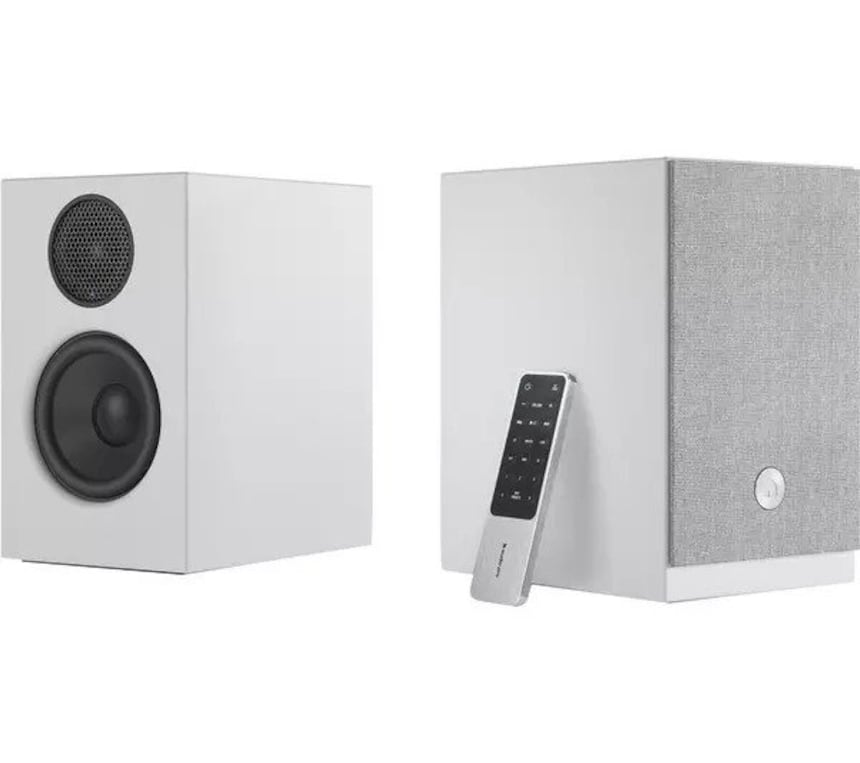
Connected Speakers
The connected speaker is a powered speaker capable of accessing the network, via a wired Ethernet or wireless connection over WiFi. It contains a built-in streamer allowing it to directly play digital music without any other device. For example, it accesses your music library, web radio and services such as Qobuz. These speakers are fully autonomous. They are available as all-in-one mono or stereo units, or in pairs. These are usually rather compact speakers, which are easy to install.
Studio Monitor Speakers
Speakers made for music professionals are mostly active speakers. They are called "studio monitor" or "monitoring" speakers because their objective is to monitor the sound for musical performance, recording and production. This type of speaker usually offers a very clear sound. The sound engineer needs to be able to hear all the details, without any adulteration or bias. The listening experience is unusual, but is being found in more and more homes. Studio monitor speakers rarely look nice, but they have the merit of going back to basics. More and more music enthusiasts and audiophiles are choosing these speakers as the answer to their search for the perfect sound reproduction solution for the living room.
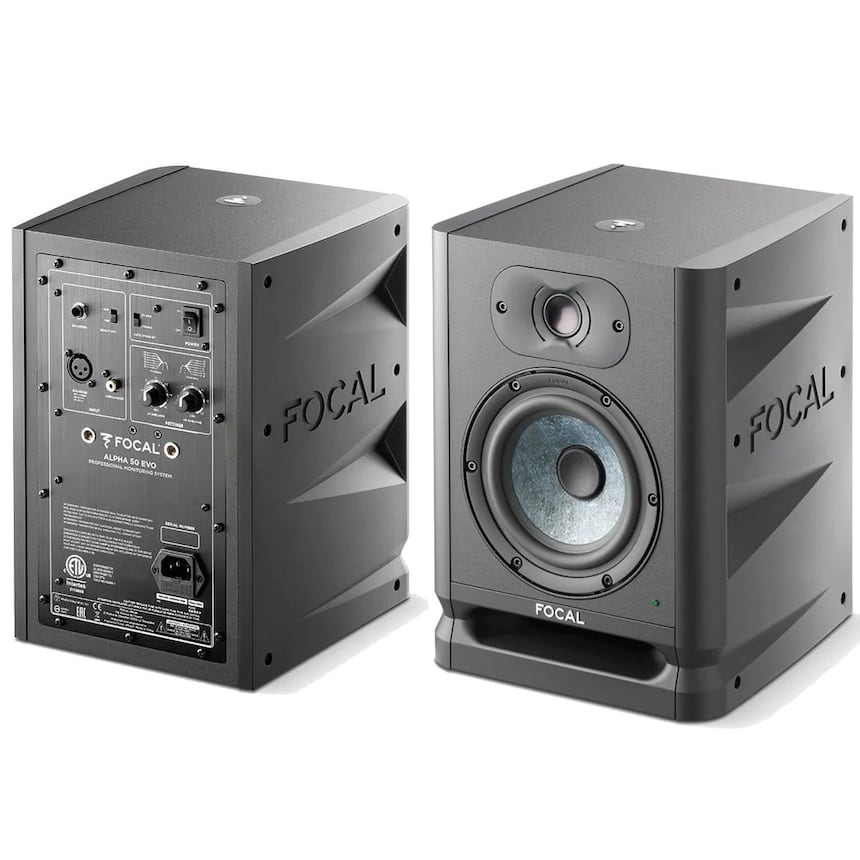
Special Models
There are other very specific families of speaker. They are intended for specific uses. Some have demanding prerequisites for installation. Others have a very particular way of reproducing sound which is not pleasing to all ears. They have the advantage of diversifying the range of products on offer for those consumers who are not satisfied with traditional speakers, whether passive or active.
Panels
Panel speakers are frequently imposing items whose loudspeakers often take the form of large grilles which hide ribbon transducers. They are complemented in lower frequencies by a classic loudspeaker. The music reproduced by these speakers is really different from what the classic speakers offer: both faster but also more diffuse. The result is not necessarily for everyone.
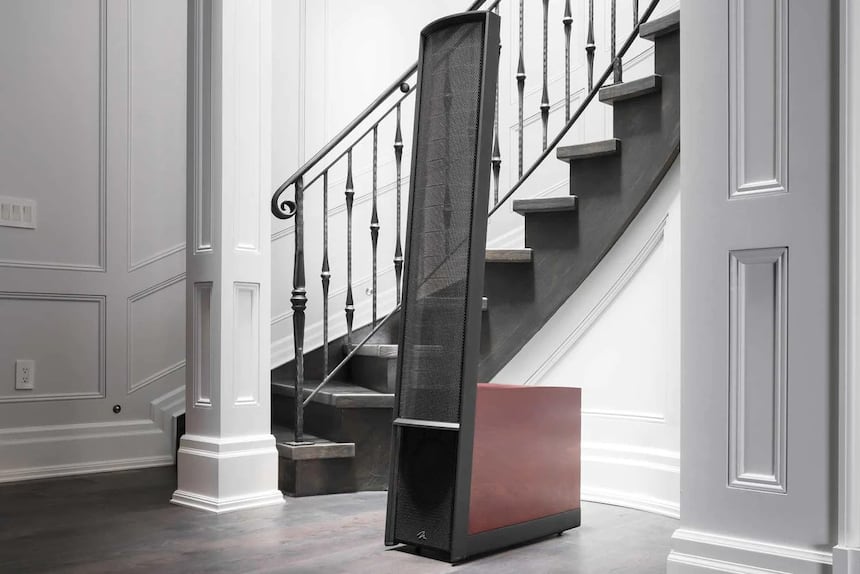
High Efficiency Speakers
These require precise knowledge but also space. High efficiency is often associated with large-diameter bass and midrange/treble drivers combined with equally large horns as seen in concert speakers. These speakers are rarely sold commercially: enthusiasts prefer to build and develop them themselves. They could not be further away from being a plug-and-play product.
In-wall/In-ceiling Speakers
Finally, there are in-wall/in-ceiling speakers. As the name suggests, they are placed directly into the walls or ceiling. It is very convenient if you lack space but not really feasible if you are a tenant. Manufacturers are offering increasingly high-end models derived from their best column speakers. It is as if the column speakers were inside the walls, meaning that the performance is there, but the footprint is not.
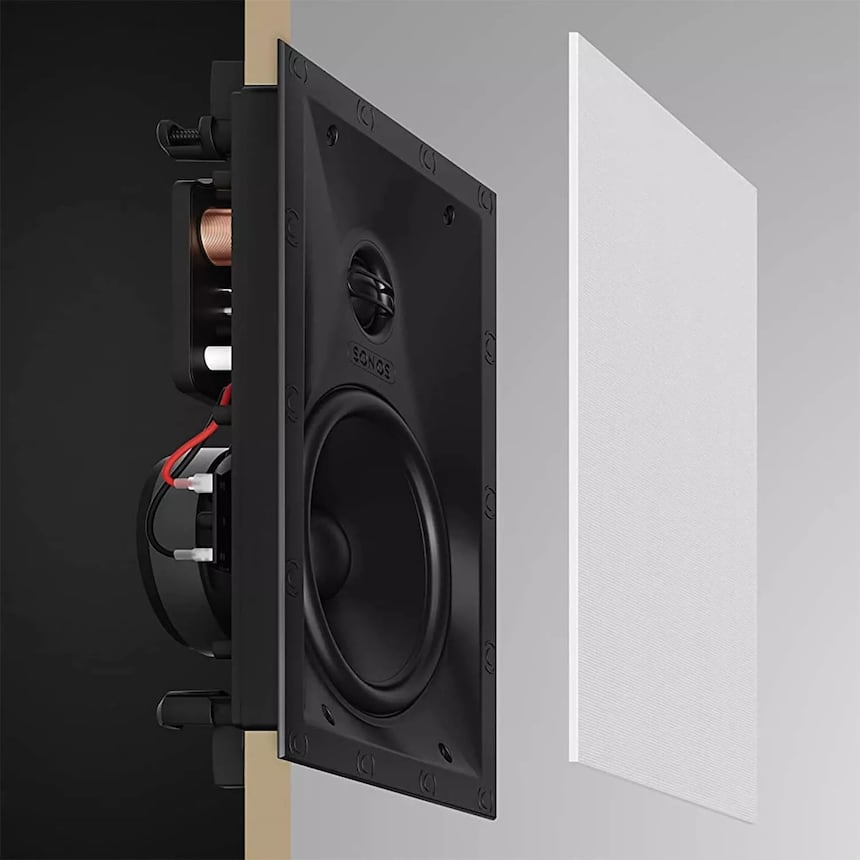
Speakers For All Tastes
The range of products on the market is wide enough to meet all needs and wants in terms of format, finish and sound signature. It is easy to get lost in it. So we cannot stress enough that you must listen to your speakers before buying them: there is no universal speaker to suit all tastes. You can also look into the different formats described in this article, and maybe opt for a type of speaker that you had not considered at first. Always remember to be reasonable and consistent in terms of budget for speakers compared to the rest of your system, and in terms of the ratio of the size of your speakers to the size of the listening room.